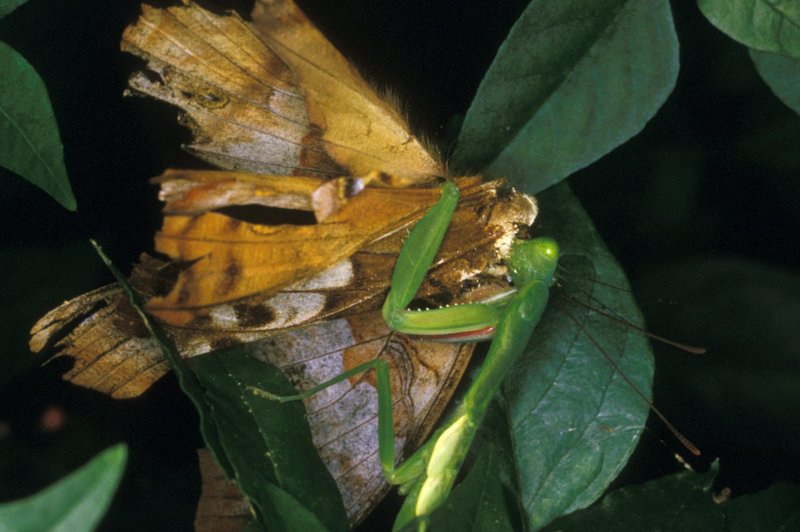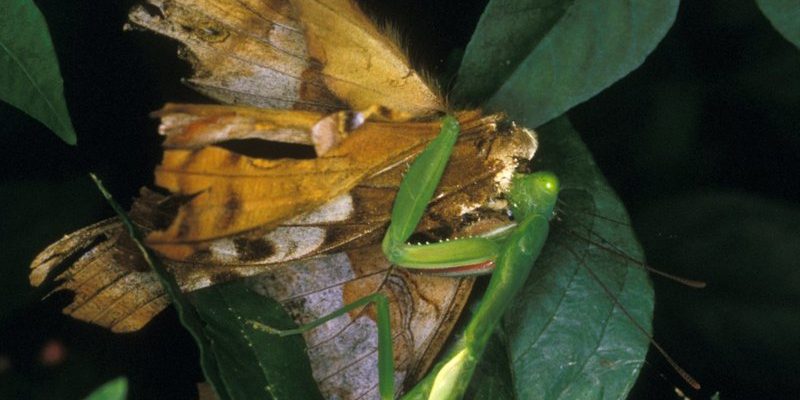
So, you might be wondering: what really threatens these fascinating insects? Well, they don’t just have to deal with larger predators; they face risks from their own kind as well! Picture a high-stakes game of survival, where each mantid must use its skills to navigate a world full of hungry eyes. In this article, we’ll discuss the various predators and threats that mantids encounter, making it easier to understand their role in the ecosystem and how they survive.
Understanding the Mantid’s Role in the Ecosystem
Mantids play a crucial role in the ecosystem as both predators and prey. On one hand, they hunt a variety of insects, helping to keep those populations in check. Think of them as the efficient pest control of the garden. Their sharp, spiny forelegs are perfectly designed for grabbing dinner, whether that be crickets or even smaller birds if they’re feeling particularly brave.
However, they are also a tasty snack for a variety of other animals. Their unique hunting technique and camouflage can sometimes make them overconfident. They might not see their own predators lurking just a few branches away. This delicate balance between being a predator and prey makes the mantid’s life a thrilling, albeit dangerous, dance.
Moreover, mantids are opportunistic feeders, meaning they will take what they can get. This flexibility helps them thrive in various environments, but it can also put them in harm’s way. The fluctuating populations of their prey can create challenges for mantids, forcing them to adapt to ever-changing conditions.
Top Predators of the Mantid
Just like every superhero has their arch-nemesis, mantids have their fair share of predators. Here are a few of their biggest threats:
- Birds: Various species, such as sparrows and crows, have a knack for spotting mantids. Their quick movements make them an easy target during the mantid’s hunting routines.
- Frogs: Certain frogs, especially tree frogs, love to munch on mantids. They often lurk in foliage, ready to catch an unsuspecting mantid that happens to wander too close.
- Other Insects: Believe it or not, larger mantids will sometimes munch on their smaller relatives. It’s a ruthless world out there!
These predators have their own tactics and skills that make them effective hunters. For example, birds have excellent vision and can spot the slightest hint of movement, while frogs use their sticky tongues to catch mantids before they can react.
The Role of Human Activity as a Threat
While nature can be quite ruthless, humans also add another layer of threat to mantids. Urban development, habitat destruction, and pesticide use can drastically impact mantid populations. Here’s how:
1. Habitat Loss: As cities expand and fields are developed, mantids lose their natural habitats. The lush green spaces where they hunt and reproduce are replaced with concrete jungles.
2. Pesticides: Chemicals used for pest control can unintentionally kill mantids. These substances often don’t discriminate, wiping out beneficial insects along with the pests they’re targeting.
3. Climate Change: Rising temperatures and changing weather patterns can disrupt the delicate balance of the ecosystem. Mantids might find it harder to find food or suitable places to lay their eggs.
These human-induced threats can impact mantid populations in significant ways, leaving them vulnerable to the natural predators in their environment.
Adaptations That Help Mantids Survive
Despite all these threats, mantids have developed some impressive adaptations that help them survive in a world full of dangers. Their unique features include:
– Camouflage: Mantids can blend in with their surroundings. This is crucial for avoiding predators. Imagine standing in a room full of people wearing the same color as the walls—you’d feel pretty safe, right? That’s how mantids feel when they blend in with their environment.
– Quick Reflexes: Mantids are known for their remarkable agility. When threatened, they can make sudden movements to escape. It’s like a basketball player dodging a defender; they just don’t see it coming.
– Aggressive Behavior: Some mantids exhibit aggressive displays to scare off potential threats. They might spread their limbs wide or change colors to intimidate would-be attackers. It’s nature’s version of puffing up your chest!
These adaptations help mantids navigate their predatory world. However, they’re not foolproof, and each mantid must continually be alert to survive.
Common Threats Beyond Predators
Alongside physical predators, mantids face several other threats that can compromise their survival. These include:
– Diseases: Just like any other organism, mantids can fall prey to diseases or parasites that weaken or kill them.
– Food Scarcity: A decline in available prey can lead to starvation, especially during certain seasons when insects are less abundant.
– Inbreeding: In more isolated populations, inbreeding can become a problem, leading to weaker offspring. When mantids don’t have access to a diverse gene pool, their survival chances decrease.
These threats often work together, creating a complex web of challenges that mantids face throughout their lives. Understanding these issues can help us be more aware of the factors contributing to their potential decline.
Mantids might seem like tough little fighters armed with quick reflexes and impressive camouflage, but they still face numerous threats. From hungry birds and frogs to human activities that disrupt their habitats, mantids must navigate a precarious world every day.
Protecting these fascinating insects means acknowledging the balance they maintain in their ecosystems. By considering our actions, from reducing pesticide use to preserving natural habitats, we can help ensure that mantids continue to thrive.
So next time you spot a mantid in your garden, take a moment to appreciate its beauty and resilience. They may be small, but their role in the ecosystem is mighty, and they deserve our respect and protection.

